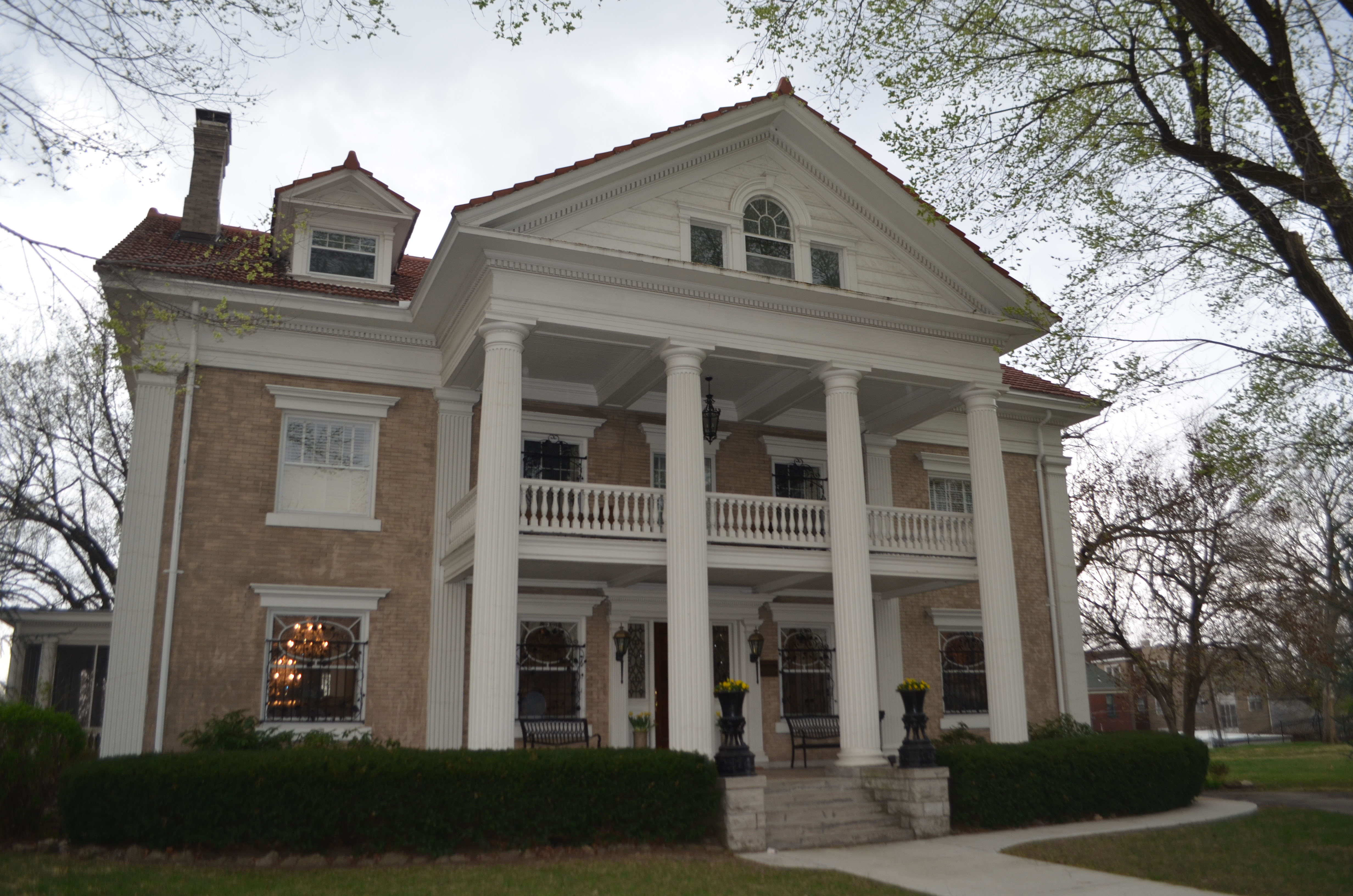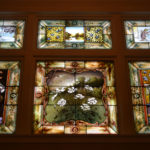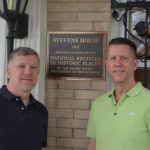
By Paul Thompson
Northeast News
March 29, 2017
KANSAS CITY, Missouri – It was a long process, but thanks to the hard work and dedication of homeowners Jeff Linville and Jeff Zumsteg, the Stevens House, across from the Kansas City Museum, recently earned a listing on the National Register of Historic Places.
A plaque mounted at eye-level next to the front door commemorates the achievement: “Stevens House (1902) has been placed on the National Register of Historic Place by the United States Department of the Interior.” Earning that plaque was more than a formality; Linville estimated that the historic designation was roughly two and a half years in the making, encompassing extensive research, diligent cataloguing, and even a visit to Jefferson City to make the case in front of a special commission.
Linville recently explained why he was motivated to undertake the lengthy process to join the prestigious group of nationally recognized historic places located in Kansas City, Missouri.
“It’s part of a historic district, but I feel like it deserved to stand on its own because of the fact that we really knew the whole history of the house,” Linville said.
That history includes a long-gestating feud between the widow of Edward Stevens and the powerful Robert A. Long – the famous lumber baron and developer who built the historic mansion where the Kansas City Museum now resides. Zumsteg revealed that the feud is one of his favorite stories about the Stevens House.
“To me, the whole story of this land is the coolest story,” Zumsteg said. “This land was part of Robert Long’s formal gardens.”
The feud began following the death of Edward Stevens, when Long attempted to buy the Stevens House. The hope, according to Linville, was to move or destroy the Stevens House in order to provide a better view of Long’s English gardens from the Corinthian Hall mansion. On several occasions the widow Stevens rejected the overtures of Long, who was one of the most powerful men in Kansas City.
“In 1902 for a woman to tell any man no – especially to the world’s richest lumber baron – to be told no on several occasions; he was pissed,” said Zumsteg with a laugh.
In retaliation, Long built a large shrub screen so that the residents of the Stevens House couldn’t enjoy the English gardens.
“But the gardener took a fancy to Mrs. Stevens, so he actually cut a place in the hedge so that the family could enjoy it like it was theirs,” said Zumsteg.
The latest twist in the story comes more recently, when the land where the garden once stood went up for sale. Seeing an opportunity, Zumsteg bought it.
“Mr. Long is probably rolling over in his grave,” said Zumsteg. “Instead of the Long’s owning the Stevens House, the Stevens House now owns the Long gardens.”
The eighth owner of the Stevens House, Zumsteg has had some interesting conversations with those who share personal history at the home. The daughter of the home’s second owner once toured the Stevens House when she was in her 90s; as it turns out, she was married on the home’s front staircase. Later, she sent two of the home’s original chairs back to be furnished in their rightful place. Another owner was an Italian doctor who served the largely Italian populace of the Historic Northeast. Zumsteg noted that people will occasionally come up and inform him that they used to visit the doctor in the home as children.
“He had a doctor’s office here in this room, said Linville. “There are a lot of people who still come through on tours and say, ‘I was born in this house.”
Though roughly 90% of the research conducted ahead of the Historic Register designation confirmed long-told stories about the Stevens House, Zumsteg said there was one notable tale that ended up being a myth: that the stained-glass window above the main staircase was made with Tiffany glass.
“We’d always been told that the stained-glass window was Tiffany, and it’s not,” said Zumsteg. “I had several stained-glass people come and look at it.”
The process of applying for and ultimately receiving recognition on the National Register of Historic Places was arduous but fulfilling for Linville and Zumsteg. Linville said that they put together a Powerpoint of more than 50 pages as part of their presentation to the commission in Jefferson City.
“They put us on the docket for August, and we went down to Jefferson City and presented it to the commission down there and got their approval,” said Linville. “It was a major relief when it was all done. We were pretty happy when we left the State meeting.”
From there, the process moved on to the national level. By the end of 2016, word had come in that the application had been approved: the Stevens House had officially been added to the National Register of Historic Places. Now that the process is over, Zumsteg and Linville aren’t satisfied resting on their laurels: they’re moving their attention to the land where Long’s English gardens once stood.
“We’re going to maybe put in some water features, and maybe some pathways, and kind of make it more connected with the house,” said Linville.




















